For years, Prague has been a fashionable destination for a city break or a weekend trip. The city is back on its feet after the lockdowns and the phases of the pandemic. The tourists come for the beautiful architecture (Gothic and Baroque churches, modernist buildings), the colorful history, cuisine, the beer-brewing tradition, and the locals’ laid-back attitude. For some time now we have seen a growing interest in Czechia, and in Prague in particular, among contemporary art lovers. The local art scene, art institutions, and private galleries are vibrant and quite active, and the city itself is buzzing with visual arts and electronic music.
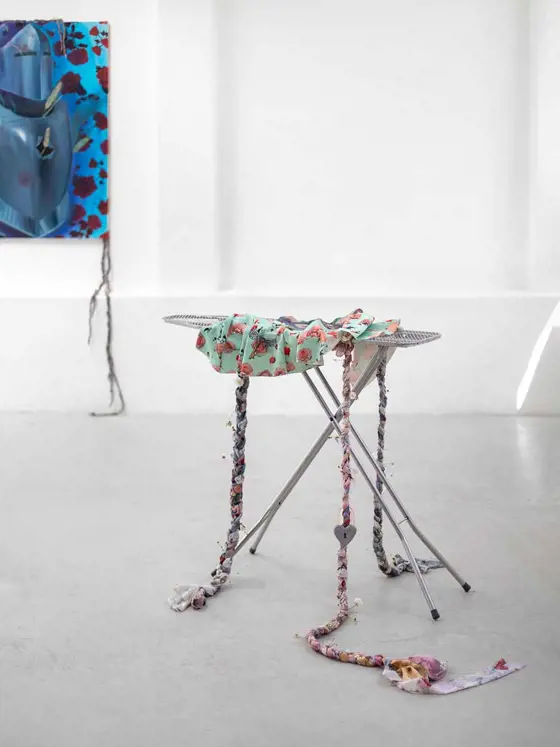
An Experimental Open Space: MeetFactory & Pram Studio
I began my trip to Prague in an unusual fashion—at MeetFactory. This independent institution was founded in 2001 byDavid Černý, a provocateur whose critical and ironic sculptures can be found scattered around Prague. His best-known works are Horse and Franz Kafka. The former is found in the Lucerna Passage, and depicts the patron saint of Czechia, St. Wenceslas, sitting atop a dead, upside-down horse. The latter is a kinetic piece cut into rotating pieces. Another of his installations is Babies, which are climbing up the Žižkov Tower. MeetFactory is located in the Smichov district, in a postindustrial building squeezed between some sprawling railway tracks and a highway. On the building’s facade, apart from a great deal of graffiti, there is a big pink automobile—another sculpture by Černý. Inside there are several exhibition halls, spacious artists’ studios, apartments for residents, cafes, and a concert hall. When I first visited this place, it was suddenly filled with alternatively-dressed people who had come all the way here for a post-rock concert. Alongside contemporary art, the institution also hosts music and theater. The gallery presently has the Let Me Hear Your Footprints exhibition, focusing on illness and disability, featuring artists who deal with these topics personally or in their art. The artist residencies are a vital part of the institution’s program; over a dozen people can stay at one time, working together and living in one space. When I visited MeetFactory, a micro-exhibition was being held by Karolina Jarzębak, a visual artist tied to Krakow. She took me to Bike Jesus, which I describe below.
Pram Studio is another institution that runs residencies, galleries, and art studios for twelve artists tied to the Academy of Fine Arts in Prague. Like MeetFactory, it is located on the outskirts of Prague, in the Vysočany district. The curator of the residency program is Šárka Koudelová, herself an interesting and active artist. She has recently invited several artists from Poland, including Maciej Nowacki, Paweł Olszczyński, Oleg&Kaśka, and Maryna Sakowska, who during their two-month stay prepared solo exhibitions in the gallery’s post-industrial space. I met up with Sakowska, who showed me around her exhibition, POV: Envy’s here to give congratulations, which locks horns with the idea of romantic love. She was displaying large-format canvases inspired by manga comics and a book by Elfriede Jelinek, Women as Lovers, installations made of fabric, ironing boards, and padlocks made of resin.
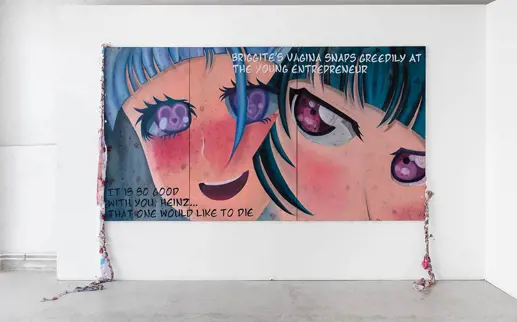
Czech Modernism and the Treasures of the National Gallery
Czech art is extraordinarily abundant as far back as the medieval times and the “golden age” of the rule of Charles IV, right through the Baroque heritage of the Hapsburg period and up to the present day. Czech and international artists from various epochs can be seen in the collections of the National Gallery, which has many branches scattered through various neighborhoods of the city. Given my interests, I visited the Trade Fair Palace (Veletržní palác), where we find the twentieth- and twenty-first-century branch. The building itself is spectacular, built in 1925–28 as the world’s largest functionalist building and the first example of international modernism in Prague. Apart from the architecture, two exhibitions are a delight—one temporary, one permanent. The permanent display covers art of the nineteenth century, and is called 1796–1918: Art of the Long Century. The seemingly classical presentation of the art of an epoch actually takes the viewer on a remarkable journey. It has no dull pictures or repetitions, I really appreciate the choice of works and the curators’ thoughtful concept. You can see some classics of French painting, which were happily snapped up for Czech collections, and ones by Czech artists, such as my favorite, Frantisek Kupka, or Bohumil Kubišta.
On the ground floor is an enormous exhibition hall, whose size recalls London’s Turbin Hall at Tate Modern. This is where the most temporary exhibitions are held. In summer of 2022 you could see the MOVE: Intimacy as Resistanceexhibition, co-organized by the Centre Pompidou in Paris, full of films and large-format installations. Its themes orbit around questions of public/private relationships in the face of the pandemic and lockdowns, as well as intimacy, movement, dance, and sexuality. I was particularly affected by a piece by Julie Béna, a French artist who made a film and installation that was a great metal, welded circus caravan. Through the metaphor of the life of a circus group, the film speaks of her struggles to be an artist and mother and her family members’ entanglement in her art works.
Apart from the Trade Fair Palace exhibitions, take a visit to the museum cafe, located in the hall of the building, with its delightful glass walls and high ceilings. In this bright space, relax in minimalist furniture from the 1960s, amid many plants. The Trade Fair Palace is not the only example of modernism in Prague. The city is full of buildings and old shopping centers from the 1930s, when the capital of Czechoslovakia was a very wealthy and creative city. Its trademark elements are the semicircular corners you’ll find, for instance, on the obchodní dům of the Brandejs Palace or the glass facades, as in the Beta Palace. As you take a tram or stroll around the center of Prague, keep your eyes peeled for pearls of modernist architecture.
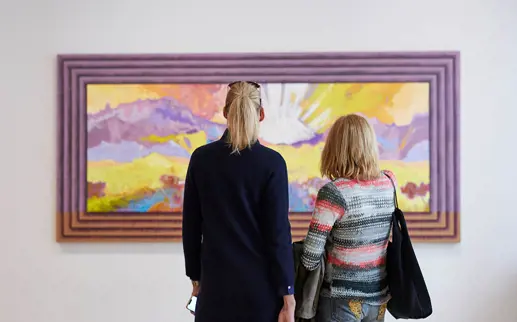
Matter of Art, or: The Second Edition of the Prague Biennial
In the summer of 2022 I was mainly coming to see the exhibitions at the Biennial in Prague. “Matter of Art” is the second edition, the first having been held in the cursed year of 2020. The biennial’s team included three curators: Rado Ištok, a Slovak curator living in Sweden, Renan Laru-an, a Filipino scholar, and Piotr Sikora, a curator from Poland with steady ties to Meetfactory. The exhibition itself was divided into three parts in various buildings: Prague City Gallery, the main building of the hospital, and Šaloun Studio. The exhibition’s main backdrop was the current sociopolitical situation, i.e. the pandemic and the war in Ukraine, and their consequences, like pain, emaciation, weakness, and frailty. The curators posed two main questions: How can we deal with the crises? Can art respond to traumatic events? The artists, mainly from Eastern Europe, were interested in topics like power structures, relationships of strength, and a feeling of powerlessness, traumas, violence, and how it shapes our history and present-day reality. Many works pertained to identity, colonial, or feminist issues, but other actors joined in, ones who under normal conditions have difficulty finding a venue to express themselves: the ill, handicapped, or poverty-stricken.
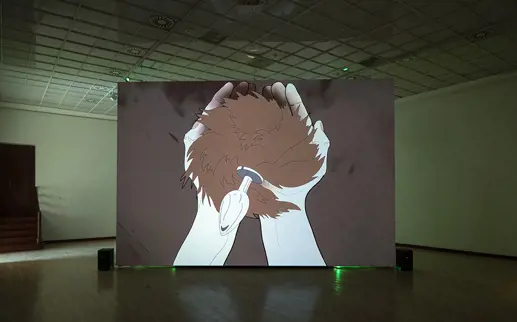
Private Galleries in Prague
The diversity of the contemporary arts scene in Prague is on display at their biggest event, Prague Art Week, held annually in mid September. Its program joins the activities of private galleries and foundations with public institutions to create a wide array of exhibitions, meetings, performances, and educational activities. This makes its formula different from the Warsaw or Berlin Gallery Weekend, which are more focused on the commercial aspect. This does not mean, however, that Prague is short on private galleries.
Perhaps the most renowned place is the hunt kastner gallery, founded in 2005 by Katherine Kastner from the USA and Camille Hunt from Canada, focusing on presenting contemporary Czech artists and promoting their work abroad. The gallery represents, for instance, one of my favorite Czech artists, Klára Hosnedlova, who makes disquieting drawings and installations that allude to mythology, technology, the female body, cyborgs, and science-fiction. Another gallery worth having on your radar is Berlinskej Model. This is an alternative, progressive space that tries to resist the commercialization of art and respond to the sociopolitical context in real time. Its credo indicates that environmental activities and social responsibility are important to them. Their program joins Czech and international artists, building relationships between them. Jeden Dva Tri Gallery is an artist-run space maintained by the Petrohradská kolektiv. It was established in 2016, in a large cultural center that also features a courtyard with a garden, a cinema, and a residency center. The space’s head curator is Edita Štrajtová, but the gallery is open to various outside projects.
I regret that during my time in Prague saw the closure of my favorite local art gallery, which I’ve been following on Instagram and in international art magazines. The FUTURA Centre for Contemporary Art was an independent, private, non-profit institution in the Smichov district, made up of two large exhibiting spaces of over a thousand square meters, and a residency program in Kutna Hora. It was founded in 2003 by a group of international artists and curators in the space of a former factory, which was partly renovated in the Classicist white-cube style, and partly as a space with brick walls, resembling a cellar. In the gallery garden we find another sculpture by David Černý, Brown Nosing. This is a huge, white, clenched rump placed on the building’s facade; you can look inside it by climbing a ladder. The institution’s program has focused not only on artists from Eastern Europe, it also presents young artists from around the world. Unfortunately, the gallery’s main sponsor has backed down from financing the project and both the gallery and Černý’s sculpture are presently off-limits to viewers. Fingers crossed that a way will be found to get this place back up and running!
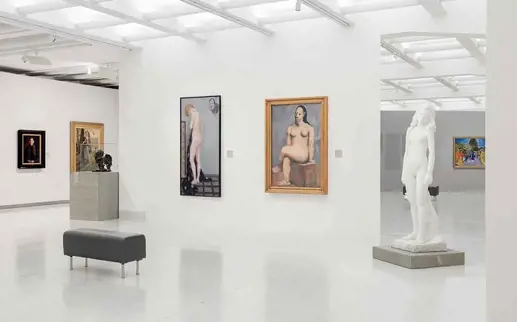
Alternative Prague by Night
In the evenings Prague has much to offer as well. I recommend getting away from the crowded main square and heading toward lesser-known areas and neighborhoods. Bike Jesus is worth a visit at night—it’s an electronic music club on an island on the Vlatava River. The building looks like a squat or an abandoned hotel. Its walls are covered in graffiti, the most prominent tag reading: “Black Lives Matter Roma Lives Matter.” On the roof is a giant white neon installation. There are many half-pipes in front of the building, as well as dirt mounds for BMX biking. In the evening other sports go on here, some of them extreme or ecstatic. Apart from the parties at night, there is also a bike workshop in the building. Bike Jesus is a place for meeting local artists at night, and few tourists find their way here.
Other places worth visiting to escape the crowds on Charles Bridge is the Żiżkov district. You can get here easily because you can see its central communist television tower from afar. It was designed by Václav Aulický in the mid 1980s in a “high-tech” spirit. Many call it the ugliest building in Prague, but its surroundings still pulse with life. At its peak is a viewing platform and a restaurant, next door is a concert hall, and around it is a park where you can play mini golf. Żiżkov is a pulsing district full of apartment buildings, student bars, and restaurants. Nearby there’s the Riegrovy sady park, with a beautiful panorama of the city. This is a places where locals enjoy meeting and throwing together picnics. Its the perfect place to watch the sun set over the Hradčany. It reminds me a bit of the steps at Sacré-Coeur in Paris, except that the Prague equivalent is a hundred times less touristy.
In your search for alternative spots you might also wander further from the center, to the Vršovice district. This part of Prague hosts the Petrohradská kolektiv artist-run space, and the above-mentioned Jeden Dva Tri Gallery. Petrohradská street is famed for its bars and restaurants, where students and artists flock in droves.
Prague and its riches of contemporary art are too much to take in on a city break. You need to return here several times and explore it slowly. It has much to offer those who are interested in contemporary art. It’s a good idea to head here during one of the city’s many events—during the biennial or an art weekend.
Similiar Articles
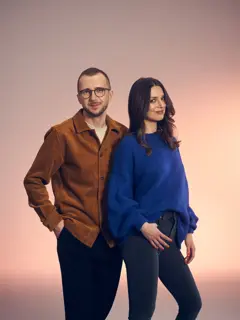
- Trend
- Poland
Coffee Spots Polska is back
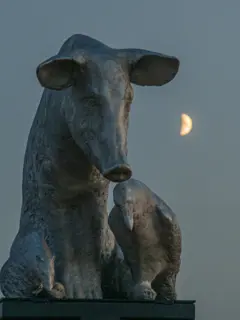
- Trend
- Poland
Exhibition: "From the Ashes" at Zachęta
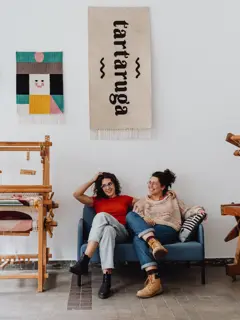
- Trend
- Poland
